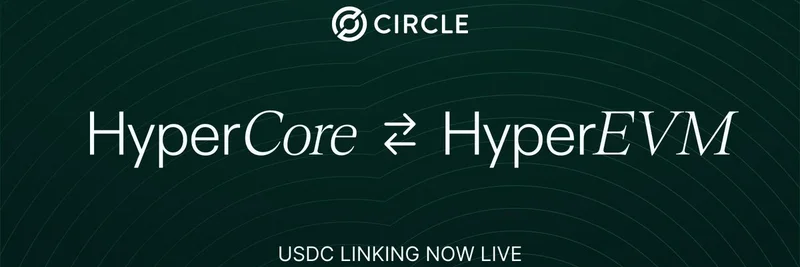Hey there, crypto enthusiasts! If you're knee-deep in the world of meme tokens and blockchain tech, you'll want to pay attention to the fresh insights dropping from TOKEN2049 in Singapore. The Chopping Block podcast, hosted by sharp minds like Haseeb Qureshi, Tom Schmidt, Tarun Chitra, and Robert Leshner, just went live with a powerhouse episode featuring Arthur Hayes from Maelstrom and Tom Lee from Fundstrat Capital and Bitmine. Recorded right on stage at the event, this chat unpacks some of the hottest battles shaping crypto's next cycle—from perpetual DEX rivalries to stablecoin innovations that could supercharge meme token ecosystems.
Let's break it down section by section, keeping things straightforward so you can grasp how these developments might influence your favorite memecoins and broader DeFi plays.
Kicking Off with TOKEN2049 Vibes
The episode sets the scene at TOKEN2049, one of crypto's biggest gatherings, where the talk revolves around emerging "arms races" in the space. Think of it as a battleground for trading platforms and money infrastructure. Hayes and Lee, along with the hosts, highlight how these competitions are drawing lines for the future. For meme token fans, this means watching how infrastructure upgrades could make launching and trading memecoins faster and cheaper across chains.
Tom Lee's Take on Ethereum's Supercycle
Tom Lee steps up as Ethereum's unofficial hype man, pushing the idea of an "ETH supercycle" fueled by Decentralized Asset Tokens (DATs). He explains DATs as tokenized assets on Ethereum, with about 70 of them currently trading below their net asset value (NAV). This "mNAV compression" creates opportunities for consolidation, like unwinding underperformers or converting to ETFs. But it's not all smooth—regulatory eyes from the SEC and Nasdaq, plus dramas like the ZeroG controversy, are throwing curveballs.
Lee's optimistic vision? A "communications flywheel" where better messaging and market fixes could propel ETH to new heights. If you're into meme tokens on Ethereum, this supercycle could mean more liquidity and hype, potentially boosting those viral launches. As Lee puts it, framing the supercycle as a growth driver through DAT dynamics could be game-changing.
The Hurdles and Horizon for DATs
Diving deeper into DATs, the panel discusses the real-world challenges: pricing inefficiencies where tokens lag behind their actual value, leading to potential market shake-ups. Consolidation seems inevitable, with some DATs possibly folding or evolving into ETFs amid scrutiny. The takeaway here is that while DATs hold promise for Ethereum's growth, success hinges on dodging regulatory pitfalls and tightening NAV alignments. For blockchain practitioners, this is a reminder to keep an eye on how token standards evolve—could DAT innovations trickle down to more structured meme token frameworks?
Plasma: The Stablecoin Game-Changer?
Plasma gets billed as "Berachain-for-stablecoins," a Tether-linked chain offering zero-fee USDT transfers and juicy incentives. The crew compares its transaction flows to heavyweights like Ethereum and Tron, pondering if it can hold its ground long-term. A big plus? Its distribution through Binance Earn, which could draw massive user bases. Hayes and company debate sustainability, but the consensus leans toward Plasma shaking up stablecoin rails. Meme token traders, take note: Cheaper, faster stablecoin moves could mean easier flips and less friction in volatile markets.
The Perp DEX Wars Heat Up
One of the juiciest parts is the perpetual DEX showdown, with Hyperliquid facing off against Binance-backed Aster. Aster's recent surge is testing Hyperliquid's dominance, while tie-ups like Bybit with ApeX and Coinbase with Avantis are escalating the fight. Zero-fee trials on platforms like Lighter are intriguing, but the panel questions if volumes will stick post-airdrop.
Arthur Hayes drops his hot take: He went 126x long on Hyperliquid but sold before massive token unlocks (around $500M/year starting November). His view? "Bullish unlocks" only work with real fees and lasting edge. For meme folks, perp DEXs are where leveraged bets on memecoins happen—stronger platforms could amplify those wild rides.
Fee Compression: Boon or Bust?
Tied to the DEX wars, fee compression is putting pressure on profits. Zero-fee models might lure users short-term, but the shift could be toward yield-generating vaults like HLP or LLP. The opinion? It's a test for DeFi's staying power, possibly sparking new ways to earn. If fees keep dropping, meme token trading could become even more accessible, but platforms need to innovate to capture value.
Prediction Markets: Polymarket vs. Kalshi
Shifting gears, the talk hits prediction markets, calling the Polymarket-Kalshi rivalry a "South Park moment" for mainstream breakthrough. These platforms are now cited by funds for odds on real-world events like elections or Fed moves. The accuracy in 2024's polls is turning heads. Takeaway: Prediction markets are maturing, offering crypto users reliable tools beyond gambling. Imagine betting on the next big meme token pump— this could integrate deeply with community-driven narratives.
Zcash and the Privacy Coin Revival
Wrapping up, there's buzz around Zcash's unexpected rally, contrasted with Monero's 51% attack risks. The panel explores the push-pull between privacy perks and compliance demands, which often lead to delistings. Opinions are mixed, but the revival signals renewed interest in shielded transactions. For meme tokens, privacy coins could offer ways to anonymize trades, especially in regulatory gray areas.
Wrapping It Up: Stablecoins' Massive Potential
Tom Lee caps things with a bold call: Stablecoins could hit $4T, powered by micropayments and always-on rails expanding across chains. This isn't just Ethereum's play—multi-chain growth could explode the market. For meme token builders, this means broader adoption horizons.
If you're building or trading in the meme space, these TOKEN2049 nuggets from The Chopping Block are gold. They spotlight how infrastructure battles could elevate meme tokens from jokes to serious assets. Catch the full episode on YouTube, Spotify, or Apple Podcasts for the unfiltered convo. What's your take on the ETH supercycle—bullish or bearish? Drop your thoughts below!

